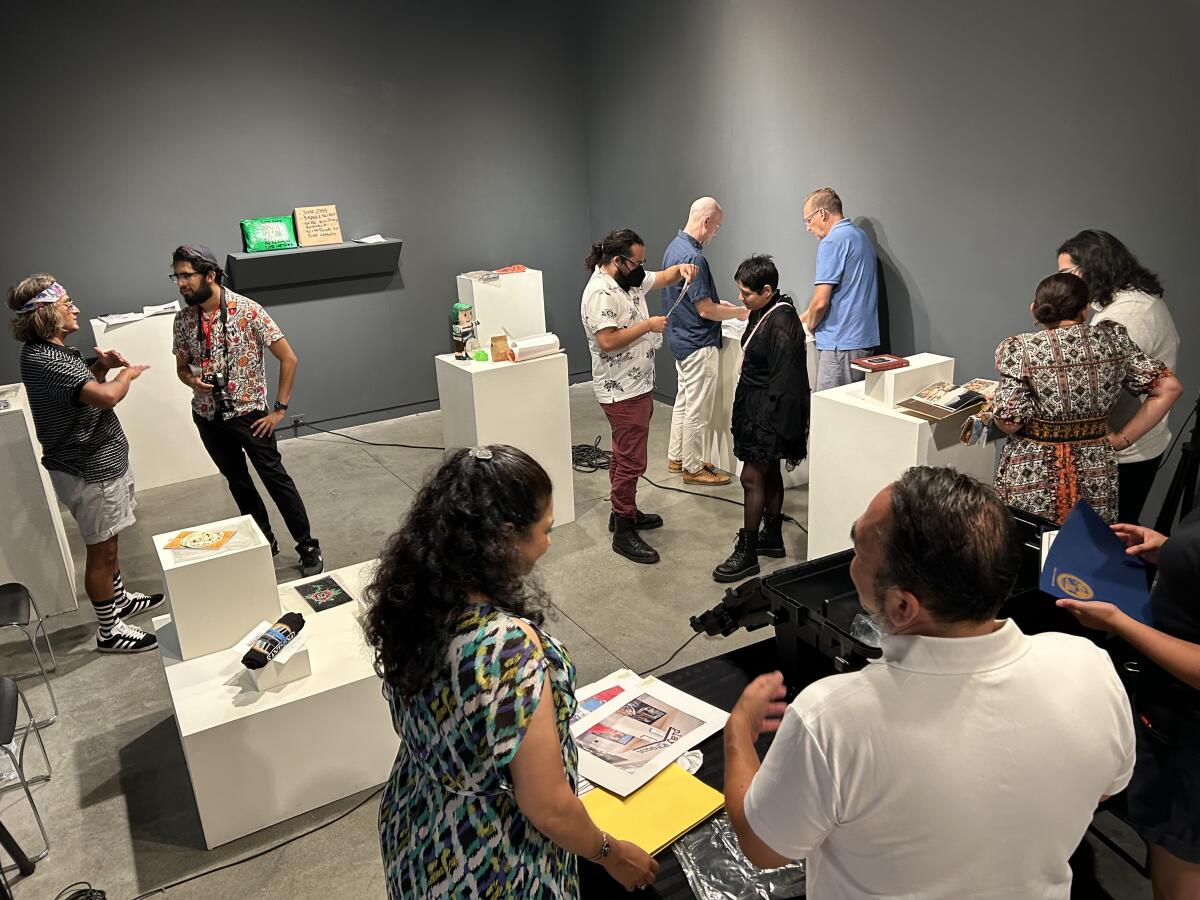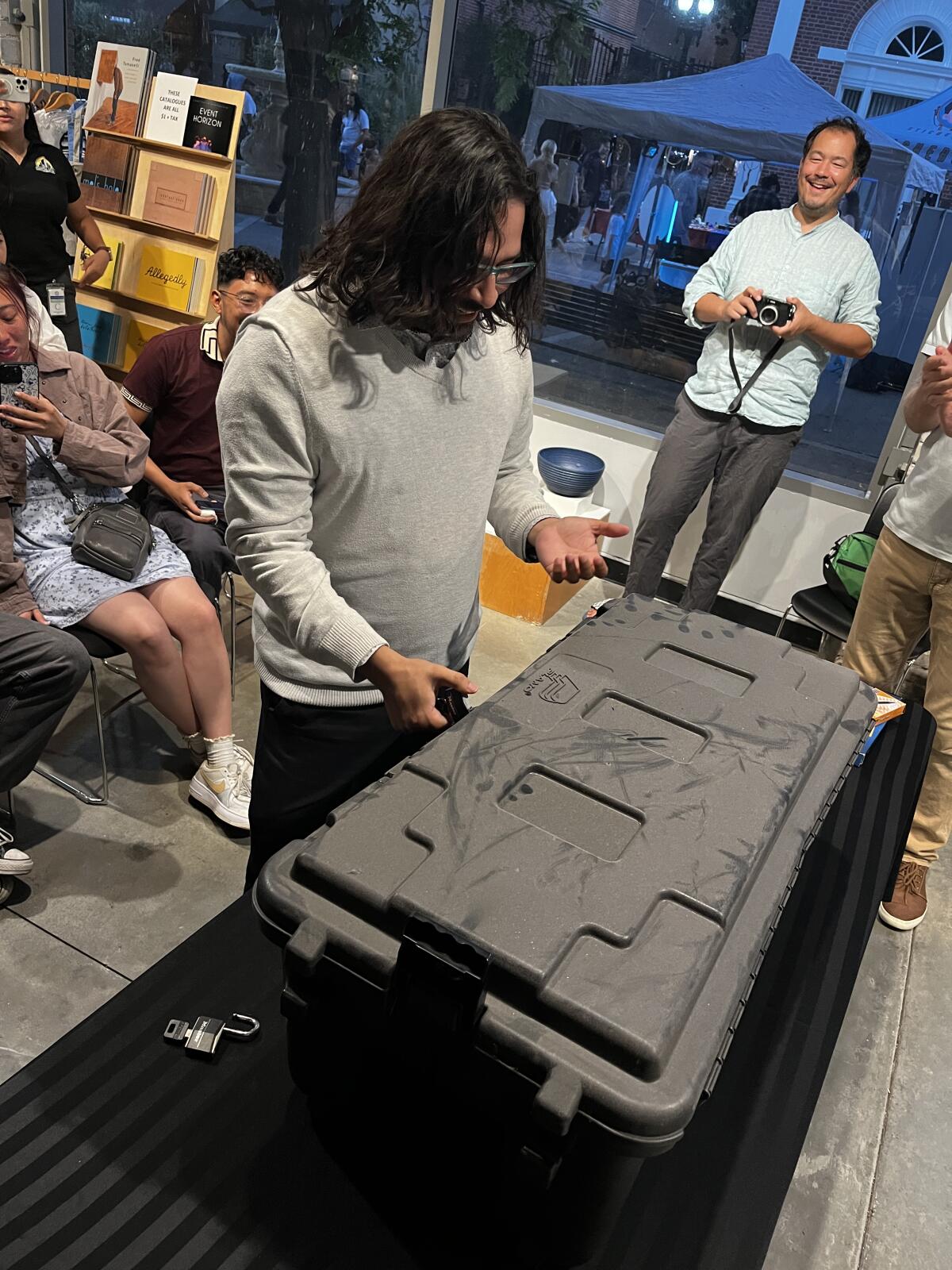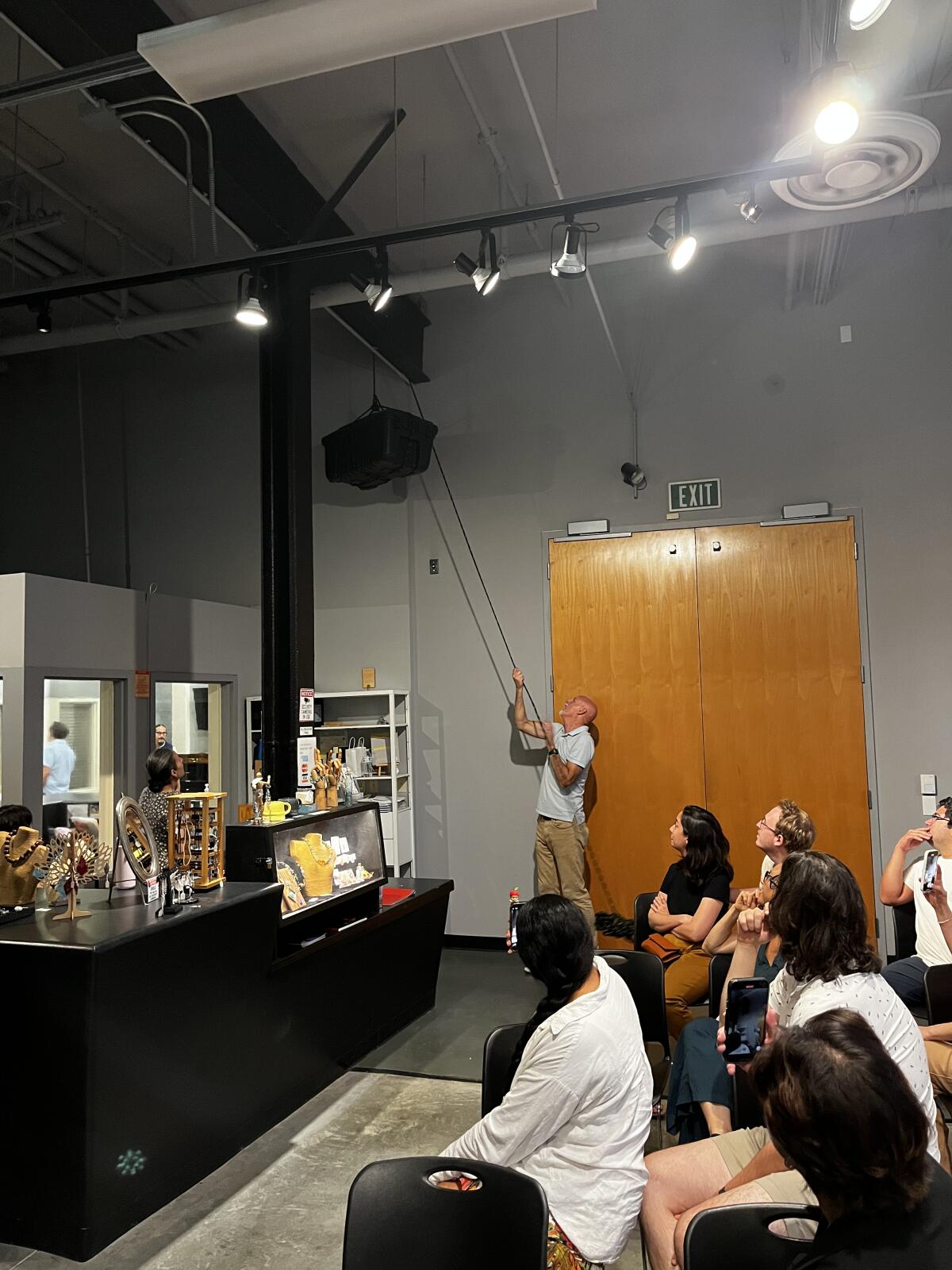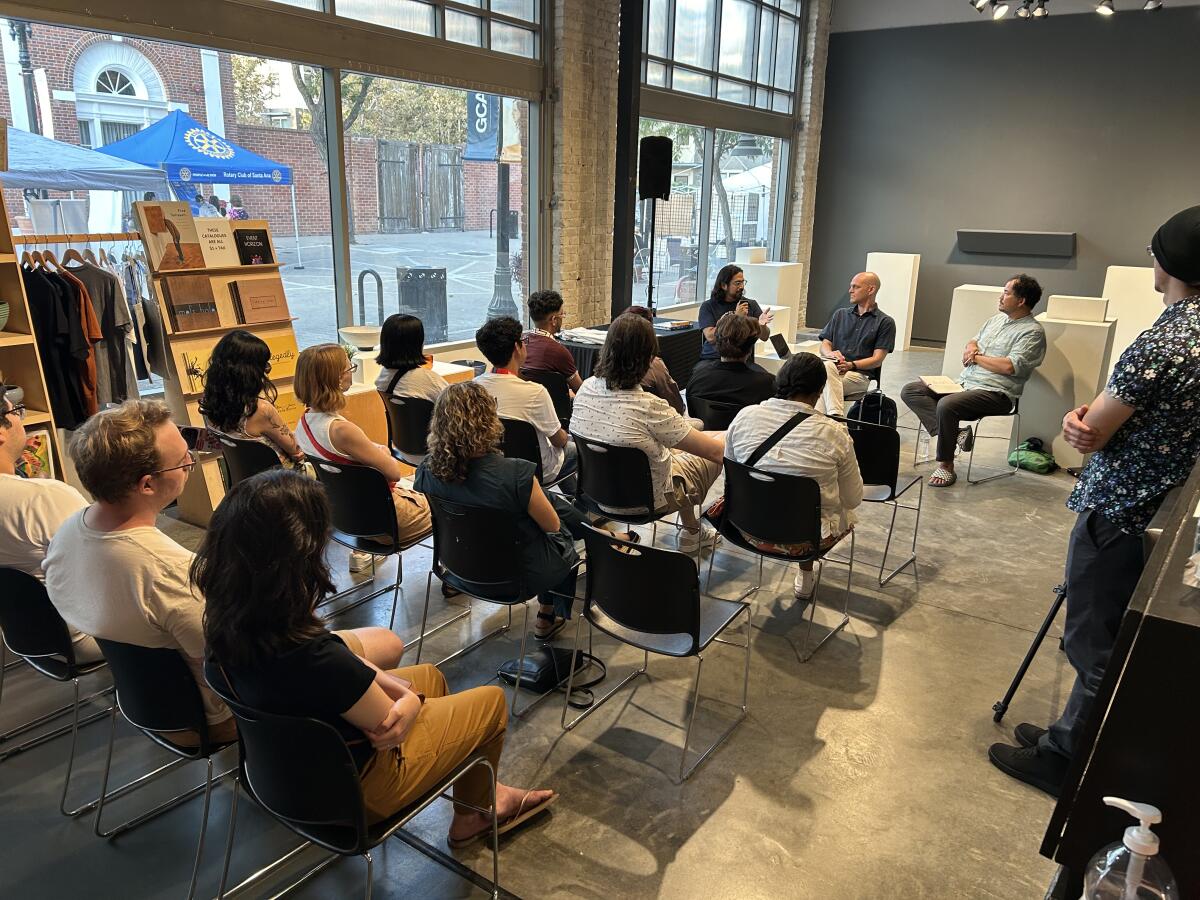The contents of a Santa Ana time capsule are at the center of ‘Future Perfect’ at Grand Central Art

A small piñata. A coin from Argentina. Film negatives of Santa Ana street life. These are just some of the items packed with intention into a time capsule that has waited in the rafters of the Grand Central Art Center for the last 10 years.
Back in 2014, artist and curator Daniel Tucker worked on a project called “Future Perfect.” Developed through the GCAC Artist-in-Residence program and supported in part by a grant to Grand Central Art Center from the Andy Warhol Foundation for the Visual Arts, the project was inspired by a speech Ronald Reagan made at the 1976 Republican National Convention about drafting a letter to be included in a time capsule.
“This was a reoccurring trope; he was very future oriented, and even though I am not someone who is in any way politically sympathetic to Ronald Reagan, I did feel like it was a useful starting point for thinking about the way that at that moment in time, we were living in the imaginary future that Reagan had attempted to conjure throughout his career,” said Tucker. “I was interested in finding a way to explore that.”

Tucker made an hourlong video that uses the speech to examine Reagan-inspired monuments and time capsules throughout California titled “Future Perfect: Time Capsules in Reagan Country.” The letter Reagan referred to was put inside a time capsule, a Mariner 171 test propellant tank, more specifically, on display at the Griffith Observatory in Los Angeles and is set to be opened in 2076. It is featured prominently in the video alongside multiple other time capsules in the region created during the Bicentennial.
Record-keeping wasn’t always thorough, however. Tucker made some surprising discoveries in his research for the project.
“I remember reading one article about a town in Southern California that had done a big construction project and found 30 unopened time capsules,” Tucker said.
Even the Ronald Reagan Federal Courthouse building in downtown Santa Ana, newly built at the time, was supposed to get a time capsule buried somewhere within it, but a collection of complications, highlighted in the video, prevented it from happening.
Tucker worked with local historian Cheryl A. Eberly, principal librarian for Santa Ana Public Library and then Santa Ana history room archivist Manny Escamilla along with youths from the Santa Ana Teen Historians program to create a time capsule of their own.
“Part of what we would always try to teach at the Santa Ana Library and in the history room specifically was that everybody’s own life story, the story of their families and their experiences growing up in the city and community are part of Santa Ana history,” said Escamilla, who is now senior policy advisor for county Supervisor Vicente Sarmiento.

At the Downtown Santa Ana Artwalk on Sept. 7, the time capsule was finally lowered from the ceiling on a rope by John D. Spiak, director and chief curator at GCAC, and unpacked before a small audience that included some of the individuals who originally packed items inside.
Teens in the Santa Ana Teen Historians program in 2014 wrote letters to themselves, though not all were present on Saturday to retrieve them. Christian Ramirez, one of the programs youngest participants, passed away earlier this year, leaving behind his letter and three poems he wrote.
Roger Reyes, a founding member of the Santa Ana Community Artist(s) Coalition, known professionally as Roger Eyes R., placed the first paintbrush he used on a public mural in Santa Ana in the capsule back in 2014.
“Roger placed the brush kind of to say, ‘In 10 years will I still be doing this?’ The happy answer there is yes … exactly 10 years later, that very morning, he was doing restoration work on local murals,” said Escamilla.
When it comes to time capsules, Tucker has a unique perspective.
“In a lot of ways I think about time capsules as being mini, amateur museums, in the sense that they are meant to convey what a specific group of people find valuable at a specific moment in time,” said Tucker.

While the time capsule included works of art, like a script for a play, CDs and drawings and paintings by local artists, it also contained items like menus from restaurants that have since closed and a copy of the now-defunct OC Weekly.
“Those things are not rendered art, but they are really interesting artifacts, and for me, because I have a real investment in the democratization of museums and exhibitions, I like the idea of a time capsule as a micro exhibition.”
The artifacts and art are now on display at Grand Central Art Center — some with labels handwritten by the people who tucked them into the time capsule in the first place. Tucker’s video is also on display. It is an exhibition Escamilla thinks many people, historian or not, can relate to.
“The desire to communicate to the future is part of human nature, to at least leave something behind so that you know your time was impactful, remembered or made a difference,” Escamilla said.
Daniel Tucker’s “Future Perfect: Time Capsules in Reagan Country” is on display at the Grand Central Art Center at 125 N Broadway, Santa Ana now through Nov. 17.
All the latest on Orange County from Orange County.
Get our free TimesOC newsletter.
You may occasionally receive promotional content from the Daily Pilot.




